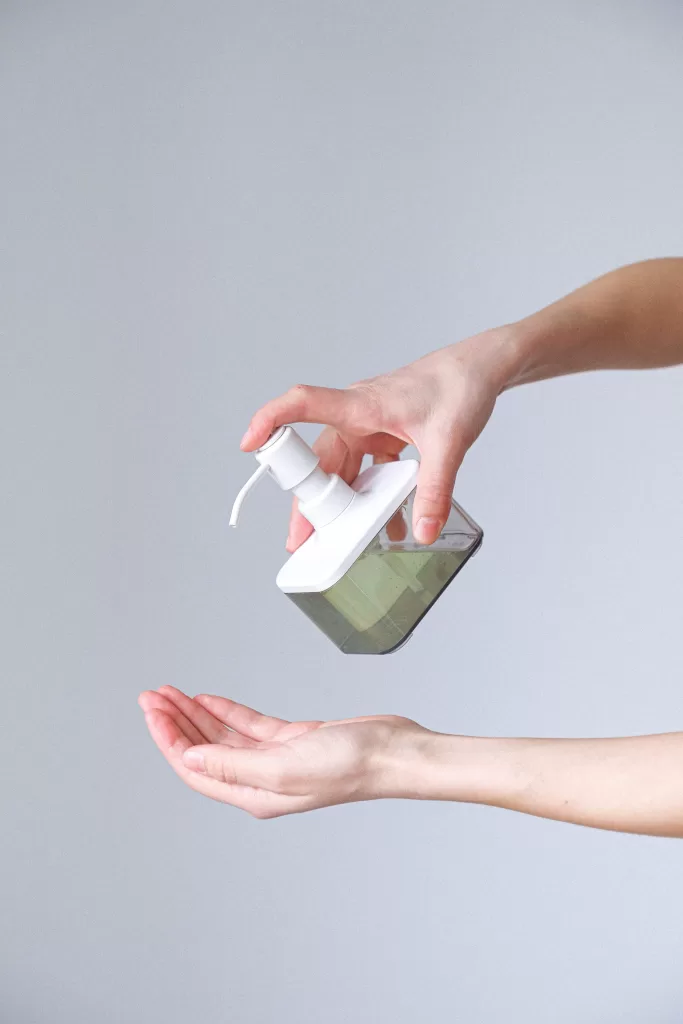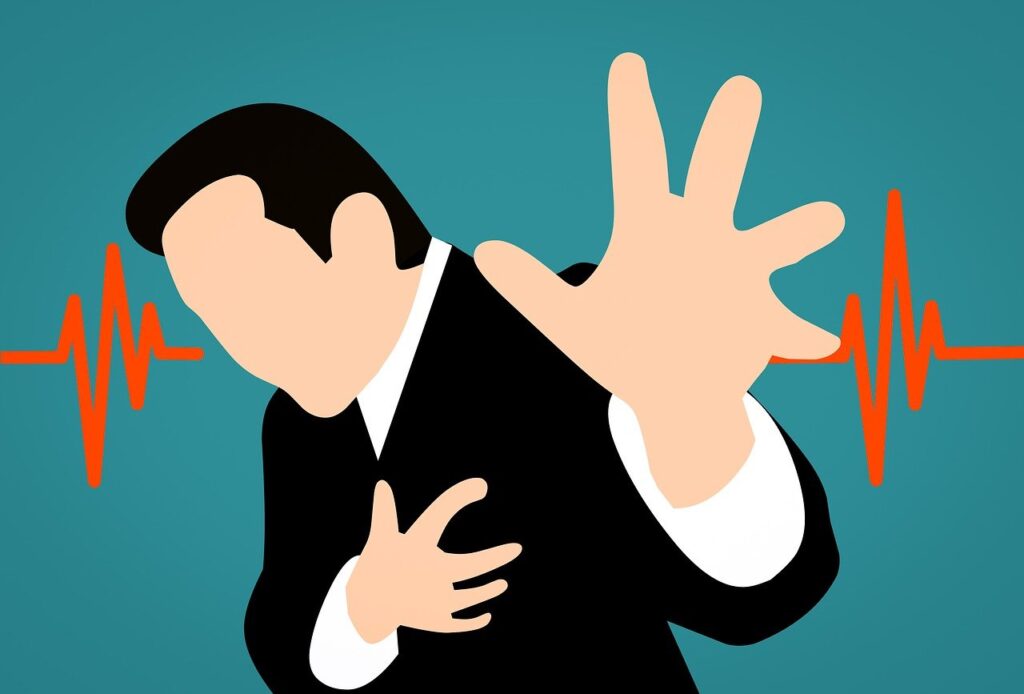COVID-19, and even the vaccines designed to combat it, have left many individuals experiencing a range of symptoms. One of the post-COVID complications that you may experience is a sore chest and tightness. In this guide, I will dig deeper into this issue, explore its potential causes, how you can manage the symptoms, and when you should seek medical attention.
Is it Normal to Have Chest Pain After Covid?
Chest pain can occur in some individuals after recovering from COVID-19. This pain might stem from various factors related to the virus or its effects on the body. Here are a few reasons why chest pain might persist or develop after a COVID-19 infection:
- Residual Inflammation or Lung Damage: COVID-19 can cause inflammation in the lungs or damage to lung tissue, leading to chest discomfort or pain during or after the illness.
- Post-Viral Syndrome: Some individuals experience lingering symptoms after recovering from COVID-19, a condition often referred to as long COVID or post-acute sequelae of SARS-CoV-2 infection (PASC). Chest pain can be one of these lingering symptoms.
- Respiratory Muscle Weakness: Prolonged bed rest or reduced physical activity during the illness can lead to weakened respiratory muscles, which might cause chest pain during breathing or movement.
- Anxiety or Stress: The experience of having COVID-19 and the uncertainties surrounding the illness can lead to increased stress or anxiety, which might manifest as chest discomfort or pain.
- Other Causes: It’s important to note that chest pain after COVID-19 could be due to factors unrelated to the infection, such as underlying heart conditions or issues like pleurisy, pneumonia, or costochondritis.
Does Covid Cause a Tight Chest

COVID-19 can cause a sensation of tightness or pressure in the chest. This symptom is frequently reported by individuals infected with the virus and is often associated with respiratory distress. The feeling of tightness in the chest might be accompanied by difficulty breathing, shortness of breath, or a heavy or constricted sensation in the chest area. It’s crucial to note that chest tightness can vary in intensity from mild discomfort to severe distress, and it might occur alongside other symptoms like coughing or fever.
The tightness in the chest experienced with COVID-19 is primarily attributed to the impact the virus has on the respiratory system. In many cases, the virus causes inflammation in the airways and lungs, leading to a feeling of constriction or tightness in the chest. This sensation can vary among individuals, and its severity might depend on factors like the overall health of the individual, the extent of lung involvement, or any pre-existing respiratory conditions. If someone experiences chest tightness or any respiratory symptoms, especially if they are severe or persistent, seeking immediate medical attention is crucial for proper evaluation and appropriate management.
How to Manage Chest Pain After Covid

Here are some strategies to help alleviate chest discomfort after COVID:1.
1. Relaxation: Prioritize getting enough rest and practice relaxation techniques like deep breathing exercises to relieve stress.
2. Hydration: Staying well-hydrated can help maintain overall health and reduce inflammation.
3. Medication: Over-the-counter pain relievers like acetaminophen or nonsteroidal anti-inflammatory drugs (NSAIDs) may provide relief.
4. Breathing Exercises: Deep breathing exercises can ease chest tightness and improve lung function.
5. Chest Physiotherapy: Consult a physiotherapist who can guide you through exercises to enhance lung function and reduce discomfort.
6. Cognitive Behavioral Therapy (CBT): If anxiety contributes to chest pain and tightness, CBT can be an effective therapy to address it.
7. Speak to Your Doctor: If symptoms persist or worsen, consult a healthcare provider who can perform diagnostic tests and recommend a tailored treatment plan.
How to Get Rid of Tight Chest After Covid
Recovery from COVID-19 can be a complex process, and addressing symptoms like a tight chest after the illness might require time and targeted care. Here are some strategies that might help alleviate a tight chest post-COVID-19:
- Follow Medical Guidance: Always consult healthcare professionals for guidance tailored to your specific situation. They can offer personalized recommendations based on your recovery status and any lingering symptoms.
- Monitor Breathing: Practice deep breathing exercises or techniques recommended by a healthcare provider to improve lung function and alleviate chest tightness. Breathing exercises can help strengthen respiratory muscles and expand lung capacity.
- Stay Active: Engage in light physical activity or exercises suitable for your recovery stage. Gradually increasing activity levels, under medical guidance, can help improve lung function and alleviate chest discomfort over time.
- Stay Hydrated: Adequate hydration is crucial for overall health and can help maintain optimal respiratory function. Ensure you’re drinking enough water throughout the day unless advised otherwise by a healthcare professional.
- Manage Stress: Stress and anxiety can exacerbate chest tightness. Practice relaxation techniques like meditation, mindfulness, or yoga to reduce stress levels, which might indirectly alleviate chest discomfort.
- Medication Adherence: If prescribed medications post-COVID-19, ensure you take them as directed by your healthcare provider. Medications might include those aimed at managing inflammation, improving lung function, or addressing lingering symptoms.
- Seek Follow-Up Care: Regular follow-up appointments with healthcare providers are essential to monitor your recovery progress, address any concerns, and adjust treatment plans if needed.
- Avoid Smoking and Irritants: Steer clear of smoke, pollutants, or other irritants that might exacerbate respiratory symptoms or aggravate chest tightness.
- Pulmonary Rehabilitation: Consider participating in a pulmonary rehabilitation program supervised by healthcare professionals. These programs offer structured exercises, education, and support tailored to improve lung function and alleviate symptoms.
- Use of Inhalers or Nebulizers: If prescribed by a healthcare provider, inhalers or nebulizers with bronchodilators or other medications can help open up airways and ease chest tightness.
- Positioning: Experiment with different positions that might help improve breathing and alleviate chest discomfort. For example, sitting upright or using extra pillows while sleeping might aid in easier breathing.
- Dietary Considerations: Adopt a balanced diet rich in nutrients and antioxidants that support overall health and immune function. Some individuals might benefit from anti-inflammatory foods or supplements; however, always consult with a healthcare professional before making significant dietary changes.
- Gradual Return to Normal Activities: Gradually resume daily activities while paying attention to your body’s response. Overexertion or fatigue can exacerbate symptoms, so pace yourself and listen to your body’s signals.
- Continuous Oxygen Monitoring: If advised by healthcare providers, use a pulse oximeter to monitor oxygen saturation levels at home. A decrease in oxygen levels could indicate a need for medical attention.
- Support Groups and Mental Health Care: Consider joining support groups for post-COVID recovery or seeking mental health support if the experience has caused stress, anxiety, or emotional distress. Emotional well-being can impact physical recovery.
- Environmental Modifications: Create a clean and allergen-free environment at home to reduce triggers that might worsen respiratory symptoms.
- Vaccination and Booster Shots: If eligible, ensure you are up-to-date with COVID-19 vaccinations and booster shots. Vaccination can help prevent severe illness from future exposures.
- Avoid Exposure to Respiratory Irritants: Minimize exposure to common respiratory irritants such as strong chemicals, perfumes, dust, or allergens that could trigger or exacerbate chest tightness.
- Humidifier Use: Consider using a humidifier in your living space, especially in dry environments, to help keep the air moist. This can potentially ease breathing and reduce irritation in the respiratory tract.
- Thoracic Mobility Exercises: Gentle exercises focused on thoracic mobility and stretching might help relieve tension in the chest area. Consult a physiotherapist or healthcare professional for appropriate exercises tailored to your recovery.
- Alternative Therapies: Some individuals find relief from chest discomfort through complementary therapies like acupuncture, massage, or chiropractic care. Always consult with healthcare professionals before trying new therapies.
- Maintain Good Posture: Practice proper posture while sitting or standing to allow for optimal lung expansion and reduce potential chest discomfort associated with poor posture.
- Monitor Symptoms: Keep track of your symptoms, including the severity and frequency of chest tightness, to provide valuable information to healthcare providers during follow-up appointments.
- Stay Informed: Stay updated with reliable sources of information about COVID-19 recovery, new treatments, or management strategies that might emerge. This can empower you to make informed decisions about your recovery.
- Respiratory Exercises and Techniques: Participate in respiratory therapy sessions or practice breathing exercises recommended by healthcare professionals to improve lung function and alleviate chest tightness.
- Sleep Quality: Ensure good sleep hygiene practices and consider using extra pillows or adjustable sleep positions to promote better breathing and minimize discomfort while sleeping.
When to Seek Medical Attention
While sore chest and tightness can be expected post-COVID, certain signs warrant immediate medical attention:
- Severe or worsening chest pain.
- Chest pain radiating to your left arm, neck, or jaw.
- Difficulty breathing or shortness of breath.
- Persistent high fever.
- Symptoms lasting more than a few weeks.
Sore chest and tightness after COVID-19 can be challenging, but with the right approach, it is manageable. It’s essential to stay in touch with your healthcare provider, especially if your symptoms raise concerns. While these symptoms can be distressing, many recover with time, appropriate self-care, and professional guidance.
Seek out additional health articles at www.medicalantidote.com.



